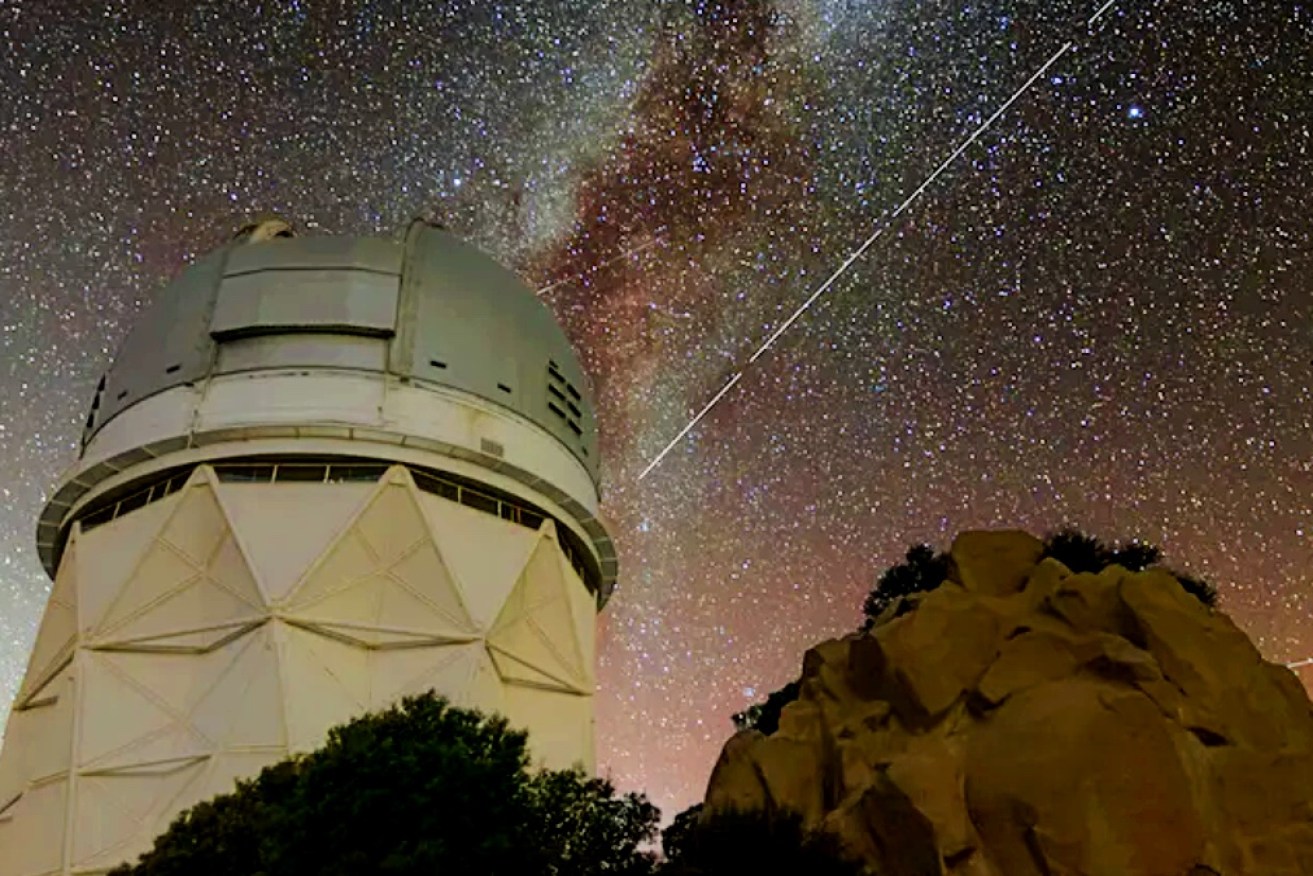Bluewalker satellite so bright it’s a threat to astronomy


Trail from BlueWalker 3 above Kitt Peak telescope in Arizona. Photo: International Astronomical Union
A satellite is shining brighter than most stars in the sky, according to new research, raising concern from astronomers about the lack of regulation and increased launches.
Bluewalker 3, a satellite launched in September 2022 by AST SpaceMobile, shines at the same intensity as the eighth-brightest star when fully deployed and becomes hundreds of times brighter than international recommendations, and its owners have plans to launch at least 100 more into space.
The satellite is a prototype for the Bluebird and was launched to increase mobile connectivity. The brightness is caused by its 64 square metre communications array — around the size of a squash court — which reflects sunlight.

A render of the fully deployed Bluewalker 3 satellite. Photo: AST Spacemobile.
The authors of the report, from the University of Auckland and University of Canterbury and published in Nature, recommended that the effect of satellites on space and the earth’s environments should be critically evaluated as a part of the launch process.
An increasing problem
Although the launch of the satellite was approved by the US Federal Communications Commission (FCC), it raised serious concern from astronomers and has been flagged as an issue by the US Government’s Accountability Office.
“Frequencies allocated to cell phones are already challenging to observe even in radio-quiet zones we have created for our facilities,” SKA Observatory director-general Philip Diamond said at the time of the launch.
“New satellites such as BlueWalker 3 have the potential to worsen this situation and compromise our ability to do science, if not properly mitigated.”
The research affirms those worries, after professional and amateur observations from Chile, the United States, Mexico, New Zealand, the Netherlands and Morocco confirmed the incredible brightness of the satellite, finding Bluewalker 3 regularly eclipses recommendations from the International Astronomical Union by hundreds of times the maximum brightness for low-orbit satellites.
Bright satellites leave trails in images taken by high-powered telescopes which can block the stars and galaxies below them, and the number of objects in the sky is only increasing.

The European Space Agency estimates there are between 60 and 90 launches a year. Photo: AAP
The FCC hasn’t yet approved or denied the launch of the Bluebird satellite array, but the company has said it needs 110 satellites to reach “substantial global mobile coverage”.
While the initial launches will be the same size as the Bluewalker 3 satellite, AST Spacemobile plans to launch a second block of Bluebirds that are double the size of the prototype currently in orbit.
Unregulated frontier
There are between 60 and 90 launches of satellites and rockets each year, but some launches from companies like Elon Musk’s Starlink include up to 50 satellites.
In July, a study in Astronomy and Astrophysics found unless strict guidelines are imposed, some astronomical observations will become impossible due to interference from satellite networks.
Starlink has sent more than 1700 satellites into orbit, with plans to launch another 30,000 in the next decade, and other companies and countries are rushing to launch their own networks.
Space is governed by a loose treaty of principles banning weapons of mass destruction from orbit and making it free for all countries to explore, with countries providing authorisation and continued supervision of commercial activities launched from their jurisdiction.
The global space industry is worth over $680 billion and is estimated to reach $1 trillion by 2030.








